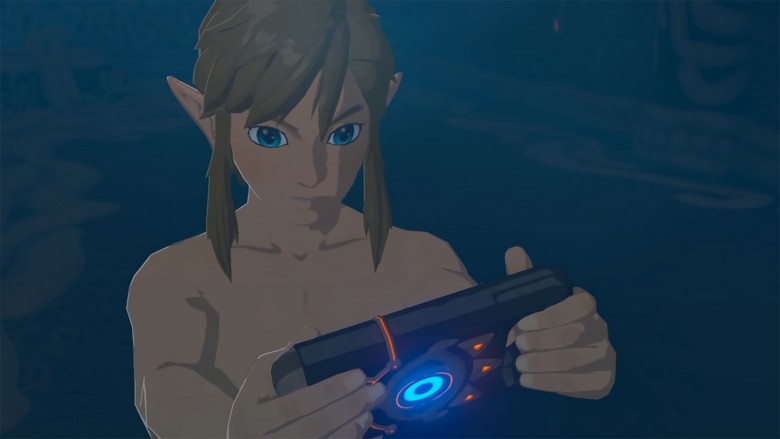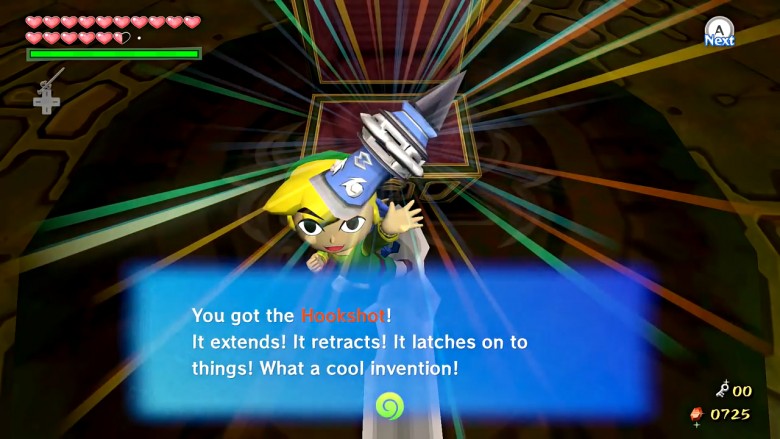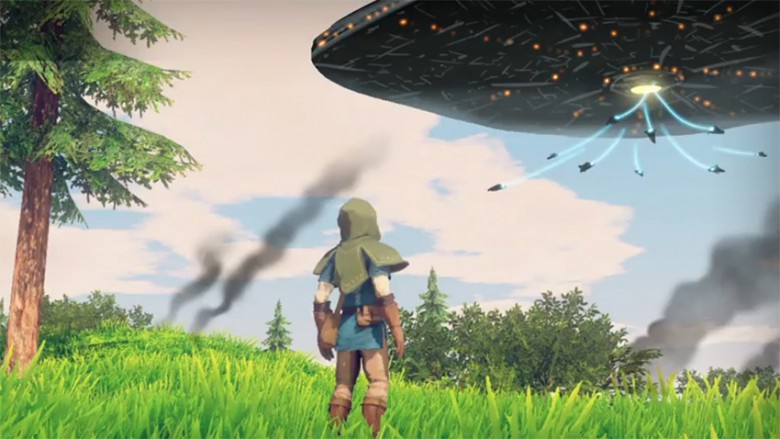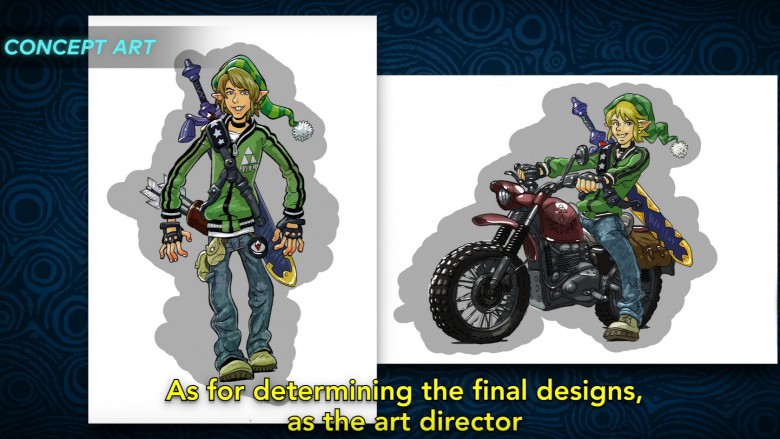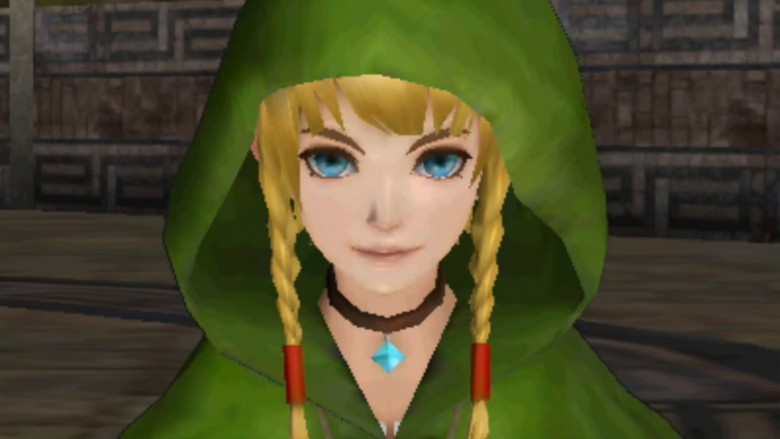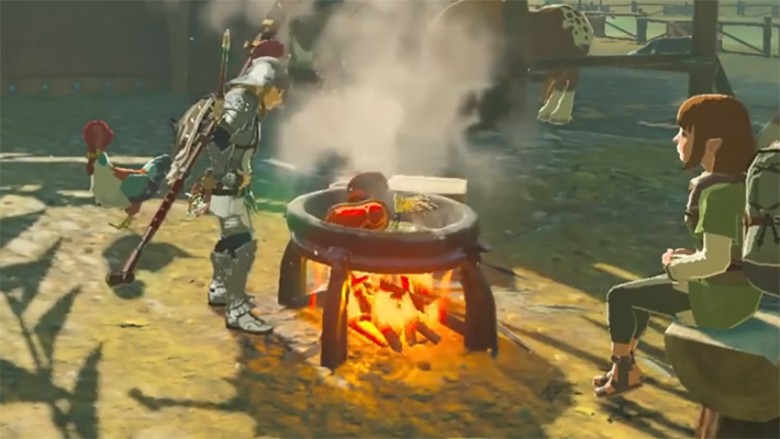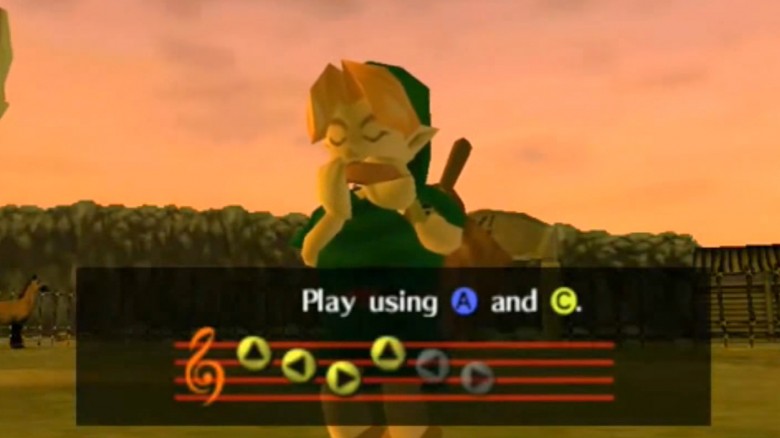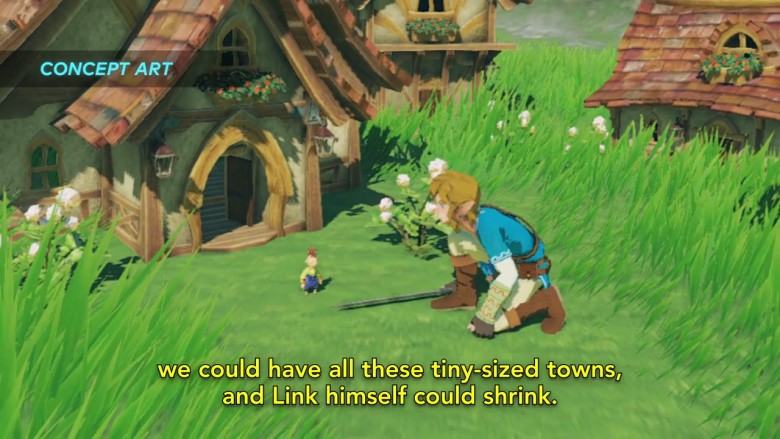Things That Were Almost In Breath Of The Wild
While developing The Legend of Zelda: Breath of the Wild, Nintendo's team of artists, programmers, and designers lived by a single mantra: "break the conventions of the Zelda series"—and, boy, did they. Unlike previous Zelda games, Breath of the Wild is a sprawling open-world experience in which players can go anywhere and do practically anything. Before, Zelda gently guided players through a mostly linear experience. In Breath of the Wild, the only limit is the player's imagination.
And yet, even after four years in development, two delays, and a world that's 12 times bigger than any previous incarnation of Hyrule, some things still didn't make it into Breath of the Wild. Some didn't match the game's overall theme. Others were cut for time or due to technological constraints. And while many of the cut features sound extremely cool (and others, well, a little silly), it's hard to argue with the end result—with hundreds of hours of content, Breath of the Wild is well on its way to becoming not just the best Zelda game, but one of the best games of all time.
Touch controls
Link meets many interesting, lively characters in The Legend of Zelda: Breath of the Wild, but he only has one companion throughout his adventures: a piece of ancient technology known as the Sheikah Slate. The Sheikah Slate opens doors and unlocks shrines, but it has a number of other uses, too. It contains Breath of the Wild's map, acting as both a GPS and an app for helping Link find his way around. At various spots, the Sheikah Slate can download geographic data, and Link can use the Slate to research enemies or take photos.
Basically, the Sheikah Slate is a tablet like an iPad, a Google Pixel, or a Wii U GamePad. There's a good reason for that, too. Originally, Breath of the Wild was intended to be a Wii U-exclusive release, and the GamePad—which has its own screen—was going to function like the player's own Sheikah Slate.
In early previews, Breath of the Wild's map appeared on the GamePad while the main action took place on the television. Director Hidemaro Fujibayashi says the Slate had other features, too, which players controlled via touching the GamePad's screen. It sounds like the whole thing was incredibly immersive—Fujibayashi claims "We felt that the way the Sheikah Slate is represented in the game and how we use the GamePad in real life synced really well."
Then the Switch happened. With the Wii U struggling in the marketplace, Nintendo decided to push the Switch to market early, with Breath of the Wild available as a launch title. While the Switch actually has a touchscreen, it's not available when the system is hooked up to televisions, and while that's not a huge obstacle for some games (the rhythm game Voez will only work in portable mode on the Switch), the Switch's flagship title needed to support its most publicized feature, and so Breath of the Wild's touch controls—and a bunch of related story content—had to go.
The hookshot, the beetle, and other dungeon-specific weapons
If you've played a Zelda game since The Legend of Zelda: A Link to the Past, then you probably know the classic Zelda formula. Link scours Hyrule, looking for precious items (pendants, sages, pieces of the mysterious Triforce, and that sort of thing). Along the way, he runs into obstacles he can't pass, or treasure chests he can't reach. In order to progress (and score that sweet loot), Link needs to dive into the nearest dungeon, find a new weapon, and then use that weapon to beat the dungeon's boss and escape. Once he's back on the overworld, Link can use his new abilities to conquer those roadblocks and find the next dungeon, and the cycle repeats.
But Breath of the Wild is different: in Link's latest adventure, players can explore the world in any order they choose. After over 25 years of the same basic thing, Breath of the Wild's non-linear structure makes for a refreshing change of pace, but it also means some of Zelda's more exotic weapons didn't make their way into the final game. While speaking with Kotaku, director Hidemaro Fujibayashi said the Zelda team tried experimenting with objects like the hookshot, a classic Zelda gadget that's kind of like a grappling hook, or Skyward Sword's drone-like beetle, but couldn't make the items fit with Breath of the Wild's open-world structure.
"We did at one point test what it would be like to be able to obtain some of these abilities in some point in the story," Fujibayashi said, "but when we do that, you are pigeonholed into having a specific order of dungeons." That took away from Breath of the Wild's go-anywhere, do-anything ethos, so Fujibayashi and his staff whittled Link's abilities down to the bare minimum, gave them all to him at the beginning of the game, and decided to focus their efforts elsewhere.
UFOs and giant robots
When Nintendo says its goal with Breath of the Wild was to break all of Zelda's conventions, they mean it. In a talk at the Game Developers Conference and in a video documentary about Breath of the Wild's lengthy development process, Nintendo's lead creatives revealed some of the earliest ideas the company had for the next Zelda game, and some of them are very, very weird.
Apparently, Nintendo opened an internal message board in which designers could post ideas, where art director Satoru Takizawa says "Some of our younger designers came up with very unique suggestions." In one concept, known internally as Hyrule Wars, giant mechanical beasts battle each other with laser beams while Link darts around Hyrule. In another, UFOs descend from the sky and abduct cattle (it's not clear whether this was a fully-fleshed out concept, or just an idea for a random event that could occur during the game, although the GDC talk refers to UFO-infested Hyrule as The Legend of Zelda: Invasion).
These aren't just abstract ideas, either. In order to prove their ideas' mertis, Takizawa says that members of Breath of the Wild's development team "used the development tools to make sample videos that they submitted with these proposals." That's right: even if it didn't make it into the final game, if you want to see Link dashing across the plains while mechs fight in the distance, you absolutely can.
Tracksuit Link
It's not just Hyrule that almost got a radical remake in Breath of the Wild. The series' main character, Link, went through a number of changes during development, including some designs that put him in some dubious contemporary outfits.
Dubbed "Tracksuit Link" by the developers, the early (and thankfully abandoned) concepts traded in the hero's traditional fantasy garb for a pair of skinny blue jeans, desert boots, a green jacket—with Triforce branding, of course—and fingerless gloves (also, his floppy green hat was a Santa-style stocking cap). Instead of riding a horse, he had a motorcycle. In fact, if it weren't for the pointy ears and the Master Sword strapped to his back, it would be hard to recognize this character as Link at all.
That wasn't the only redesign that Link received. In a different piece of art, he's dressed up like an astronaut, with two separate caps—one inside his helmet, and one outside—and a Metroid companion hovering over his shoulder. Link isn't the only character who almost got a radical visual overhaul, either. Ganon, The Legend of Zelda's main villain, changes from game to game, and Nintendo went through a number of looks before settling on Breath of the Wild's design. Meanwhile, Princess Zelda rocks a stylin' pixie cut in some of the earliest concept art, although that look was ultimately ditched in favor of a more conventional long-locked hairdo.
A female hero
In 2014, almost three years before The Legend of Zelda: Breath of the Wild was released, Link's delicate look made many fans wonder if Nintendo's open-world Zelda game was going to introduce the first-ever female Link—or, if not a permanent lady protagonist, at least the option to choose Link's gender. Unfortunately, that wasn't the case, and series producer Eiji Aonuma took the blame for the misunderstanding, claiming that a quote of his was unintentionally misleading.
But that doesn't mean Nintendo didn't consider switching things up, because they absolutely did. Aonuma says the development team took a long look at making Zelda, who normally plays the damsel in distress, the game's main character, but decided against it because "if we have princess Zelda as the main character who fights, then what is Link going to do?" Basically, Nintendo decided that Zelda's promotion would come at Link's expense, and scrapped the idea.
But why not make Link a girl? According to Aonuma, that'd disrupt the series' thematic balance, which—like the Triforce itself—all comes down to trios. In a typical Zelda game, there's Zelda (a woman), Link (a man), and Ganon (identified as male, but really just a monster). Changing Link's gender would "mess with the balance of the Triforce," Aonuma argues, and therefore isn't an option.
Still, Breath of the Wild's Link looks effeminate on purpose, Aonuma says. "After Twilight Princess I went back to the drawing board and decided Link should be a more gender-neutral character," Aonuma told Time. "If you saw Link as a guy, he'd have more of a feminine touch. Or vice versa, if you related to Link as a girl, it was with more of a masculine aspect.... So I've always thought that for either female or male players, I wanted them to be able to relate to Link."
Regenerating health
Reinventing the Zelda formula doesn't just mean making big changes, like restructuring dungeons or turning Link into a rebellious teenager. It means looking at the little things, too, and Nintendo's team reevaluated almost everything that makes Zelda, well, Zelda—and, unsurprisingly, they found that a lot of it still works pretty well.
For example, while cooking was something director Hidemaro Fujibayashi wanted to include in the game from the very beginning, it wasn't the only system Nintendo considered for keeping Link healthy and happy. The old system, in which players found life-giving hearts (as well as rupees, Hyrule's only accepted form of currency) in bushes or by defeating enemies, wasn't necessary in Breath of the Wild—in the new game, Hyrule is compelling enough on its own that players don't need health or cash to motivate them to explore. Nintendo also tried giving Link health that regenerated automatically, a la modern third and first-person shooters, before deciding that the game's current cooking system created the most opportunities for exploration and the thrill of discovery.
That's not the smallest tweak that Nintendo made. At one point, Fujibayashi says, the team actually tried having Link's life meter deplete from left to right, and not right to left, as per series tradition. Developers also experimented with scattering open, pre-looted treasure chests around Hyrule, making it look like Link wasn't the world's only treasure hunter. While those ideas were scrapped because players ultimately found them confusing, Nintendo's dedication to reexamining every part of the Zelda formula, no matter how small, shows the company's commitment to reinventing the franchise—and Breath of the Wild is all the better for it.
Musical instruments
Music has always been an integral part of the Zelda franchise—just go to any gaming convention, and you'll be inundated with ringtones that sound like the series' theme song. Link is pretty musical himself, too. In the first The Legend of Zelda game, Link can find a recorder (which, fun fact, was repurposed as Super Mario Bros. 3's warp whistle) that reveals hidden entrances and weakens enemies. In Link's Awakening, Link needs to play a special tune to wake up the Wind Fish, while The Ocarina of Time's signature instrument—which has all kinds of powers, provided that players know the right tunes—is so important that it's part of the title.
There are more instruments in Zelda lore, too, but not in Breath of the Wild. That wasn't always the case. In one piece of concept art, Tracksuit Link wields an electric guitar, not a Master Sword. Later on in Breath of the Wild's development, Hyrule's lovable monsters, the Bokoblins, were originally going to alert others to the presence of intruders with the sound of a french horn. However, one of Zelda's programmers actually had a battle horn, which sound director Hajime Wakai ultimately preferred—and while that's not quite as funny as watching monsters march into battle to the sound of your marching band's least appreciated instrument, it was probably the right choice.
Tiny Towns
Almost six years passed between the last Zelda game, The Legend of Zelda: Skyward Sword, and Breath of the Wild, and a lot changed in that time. Nintendo released not one but two consoles, the Wii U and the Switch, and Breath of the Wild changed from a retro-styled 2D prototype into the modern, open-world adventure you can play today.
Along the way, many, many ideas came and went. One of those concepts—one that director Hidemaro Fujibayashi was really excited about—was an entire race of miniature people that Link would have to shrink in order to interact with, Minish Cap-style. At one point, Breath of the Wild even had an entire tiny village, which Link could explore at microscopic size.
As it turns out, the rest of Breath of the Wild was just too big. Fujibayashi says, "With all these other characters that stand out, we thought it would be difficult for these little guys to be able to live out their own place in the game." The race of mini-Hylians sounds cool, but they won't be missed. With over 300 characters in the game already—and those are just the ones we know about—in addition to 120 shrines, 900 Korok seeds, and miles and miles of digital terrain to explore, Breath of the Wild has plenty for Link to do at his regular size. Besides, if Fujibayashi really wants to explore the idea of a mini-village, well, there's always room in the sequel.


